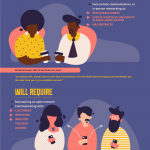How Finland’s exciting normal profits experiment Will Work–And What we will learn From It
talking to the scientist designing the national experiment that could change the way in which governments take care of their citizens.
December 7, 2015
may Finland develop into the primary us of a on the planet to introduce a universal normal earnings?
it’s fairly that you can imagine: The Finnish government likes the concept, and it can be putting severe resources in the back of a nationwide experiment. starting in 2017, up to 100,000 Finns might rise up to 1,000 euros a month, in lieu of other benefits. These lucky souls will not must work. They is not going to need to prove they’re in poverty to get the money. for 2 years, they may get a fixed quantity to do with what they’ll.
the idea of freely giving public money, no strings hooked up, sounds loopy at first. however general profits has been attracting a lot of pastime of late. Cities in the Netherlands and Canada are planning pilots. Politicians from Spain to Greece have announced their strengthen. And, right here within the U.S., the concept that has drawn fans from across the political spectrum, and specifically in Silicon Valley. normal profits is considered as a method of putting a floor below the poorest, and minimizing inefficiencies in current welfare techniques.
Finland’s govt is for 3 causes, in keeping with Olli Kangas, who’s designing the analysis experiment.

First, growing numbers of Finns are working part-time, or on a short lived or freelance foundation. These individuals don’t qualify for work-based benefits and, as a result of they’re working, they don’t get unemployment advantages both. they are caught in the heart. “One factor is to make our social safety more responsive to these modifications within the labor market,” says Kangas, who can be the analysis director at the Finnish Social insurance institution (KELA).
2d, the government desires to dispose of disincentives to working. Some unemployed Finns may not take jobs because they are able to get more money from the public purse. The hope with a general earnings—which is paid without reference to working status—is that people will want to make more money on top of their government allowance, quite than now not working at all. “We need to steer clear of these incentive traps and make taking jobs more sexy than within the existing gadget,” Kangas says.
And three, the government needs to reduce paperwork. “if in case you have earnings-tested benefits, like housing allowances, it takes time for our workers to test all the applications and notice that the client’s profits is that this-and-that, and that their hire is that this-and-that. Then, if an individual’s income is changes, they have got to repeat the process once more. If the federal government pays advantages with out that kind of checking out, it avoids bureaucratic trouble,” Kangas says.
opposite to some experiences, Finland isn’t giving money to everybody just but. it can be planning an test to see what effect a common earnings might have. Kangas’s workforce will determine a sample of working age individuals (17 to 65 years) after which, after two years, examine that staff with a regulate sample. among the research questions: How so much do individuals on basic income wish to work? what is their degree of smartly-being and happiness? And, how much do they use public products and services, like clinics and hospitals?

As a social scientist, Kangas hopes to have as giant a pattern as conceivable. With a hundred,000 people collaborating, he says it will be possible to see trends at a local and regional stage, and to take note the impact among certain groups, like the long-term unemployed. the federal government has talked about a determine of 800 euros. but the remaining amount might be roughly than that, and a few earnings could be conditional. KELA would possibly give four hundred euros robotically, then base the remainder on participation—for instance, if individuals volunteer with charities.
“One attention-grabbing workforce is the creative classification, or individuals starting small organisations. the problem is methods to generate both productivity and creativity in this united states of america,” Kangas says.
Surveys convey that 69% of Finns want some version of a normal profits. however Kangas says no longer all teams are essentially that sanguine. as an example, if the elemental profits stage is simply too high, it could upset unions and pension money that depend on contributions from employees. “If we’re paying out 1,500 euros or so, we could have some political and institutional resistance from trade unions which can be chargeable for working unemployment insurance dollars,” he says. Finland has one of the most highest charges of union memberships in the world; unions there are not sideshows as they are in other international locations.
Finland’s experiment isn’t the primary. There was an actual-lifestyles pilot in Manitoba, Canada, in the Seventies, and a number of “bad earnings tax” trials within the U.S. all through the identical decade (a type of general profits where the government manner-tests through the tax machine). more not too long ago, there have been trials in India, Namibia and Uganda. Finland is unique, alternatively, within the breadth of what it’s planning, and in that it already has a beneficiant welfare device. What occurs in Europe’s a ways north will probably be monitored closely world wide.
[high picture: Telia by the use of Shutterstock]
fast company , learn Full Story
(22)













